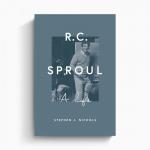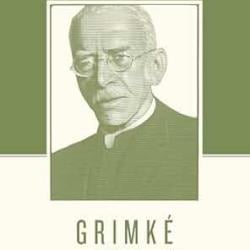This post is part of a series walking through the second volume of Abraham Kuyper’s Common Grace.
When we’re thinking about sanctification, it can be difficult to separate particular grace and common grace, even though we know theologically from Scripture that the difference is there. Metaphors help us understand the distinction, but such imagery isn’t 100% accurate. And yet, our language always goes back to something “tangible and visible”, even though this gets tricky when we’re dealing with words like “soul” or “sensibility.” (326-327)
Still, we know that there are two kinds of life: that which we share with all people, and our regenerate life via the “Word of the Gospel.” This latter kind of life is an inner life, and as a result it is difficult not to either fumble when thinking about it or merely escape into generalities.
So, let’s look at kids where these “two kinds of life” are contrasted “in unmixed form”–specifically children who die early and yet clearly have both sorts of life:
“Everyone agrees with this. Otherwise we would fall into the heresy either that these children were not conceived and born in sin, and those could be saved without regeneration, or that they would have to be excluded from all God’s mercy.” (327-328)
To use terms from earlier in the book, such children are regenerate, but not converted. These infants have biological life and spiritual life without sanctification in this world. And yet, when such an infant survives, his regenerate self grows alongside the sinful nature’s growth. We are mixed beings, a duality we see in both Psalm 51 and Romans 7. Paul especially in Romans 7:12-20 sees a twofold source of grace in our two lives. This does not mean that particular grace grows out of the sinful old life. Scripture is quite clear here. But Scripture is also clear that we still sin, even as believers. We are two plants: one still growing from the old root, the other growing from the new.
And with that said, we must also remember that we are one organically whole person. To spring from the image Kuyper presents (and Scripture uses) of two plants into the idea that we are two persons is to fall into antinomianism. Instead, we have to admit the mystery while drawing some understanding from Scripture’s use of the imagery of grafting. Wild trees can have good shoots grafted onto them, forcing them to work for the good. [Note here: I am not qualified to comment on how accurate Kuyper’s horticulture is at this point; I can, however, point out that he has flipped the Biblical metaphor–in Scripture, we are wild plants grafted onto the good plant of Christ, while Kuyper reverses that for reasons I’m unclear on.]
This is only a limited metaphor–regeneration is new life in itself, not a leeching off of the old life. Neither is regeneration an addition to our old life, where we go from being a “sinner” to being “sinner + x”. Rather, we are changed. We go from being a “sinner” to being a “saint,” albeit a “saint” with the old “sinner” hanging around and with some life left. We are changed/renewed/straightened/etc at the “center” of our beings, which in turn affects the “periphery” in terms of “civic righteousness.” However, we do not see each step of this change along the way.
This center ==> periphery language will come up again in a few chapters.
Dr. Coyle Neal is co-host of the City of Man Podcast and an Associate Professor of Political Science at Southwest Baptist University in Bolivar, MO













